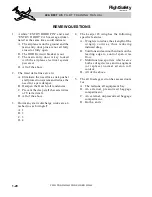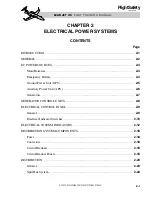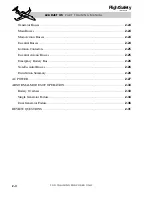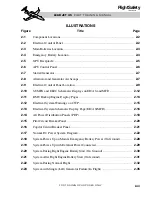
Windows
Windshield
The windshield consists of the pilot’s and co-
pilot’s windshield halves (Figure 1-15). The
windshields are of a sandwich construction uti-
lizing two plies. The exterior surface is scratch
resistant glass and is coated with a substance
that readily sheds rain droplets. The inner ply
is made of polycarbonate material and provides
the structural protection for the crew. The
windshields have an electrically powered in-
tegral heating element between the layers for
complete deicing and internal defogging.
Cabin Windows
There are sixteen cabin windows; seven on
each side of the passenger compartment and
one on each side in the lavatory. They are
made of two separate panes of acrylic plastic
with an air space between. One window is lo-
cated in the emergency exit door/hatch. Each
window has an accordion type shade installed.
Fuel Section
The fuel section is located aft of the rear pres-
sure bulkhead. This section contains the fuse-
lage fuel tank.
Tailcone Section
The tailcone section extends aft from the fuel
section to the empennage. A door is located
on either side of the tailcone section (Figure
1-16). These doors provide access to the air-
plane baggage compartment (left side) and to
the tailcone equipment bay (right side).
Access to the lighted and heated, unpressurized
baggage compartment, approximately 50 cubic
feet (capacity not to exceed 500 pounds), is pro-
vided through the external door on the left-hand
side of the tailcone section, just below the en-
gine nacelle. The 33 inch wide door is hinged
at the forward edge (Figure 1-16) and secured
by two latches and a security lock. A small
locking arm is provided at the top of the door
to rigidly hold the door in the open position.
L E A R J E T 4 5
P I L O T T R A I N I N G M A N U A L
1-14
FOR TRAINING PURPOSES ONLY
FlightSafety
international
Figure 1-15. Windshield and Window Locations




































